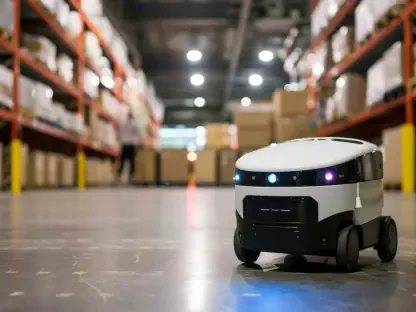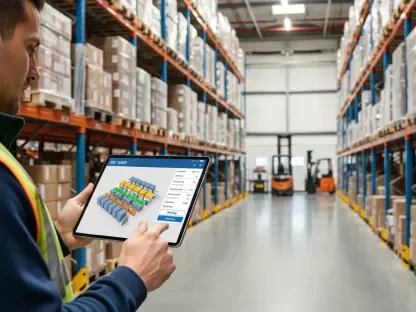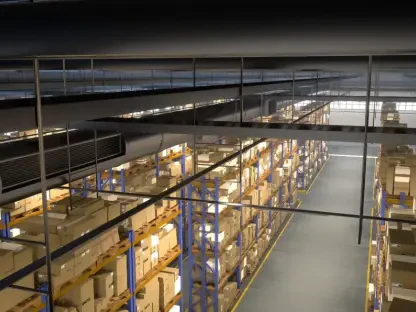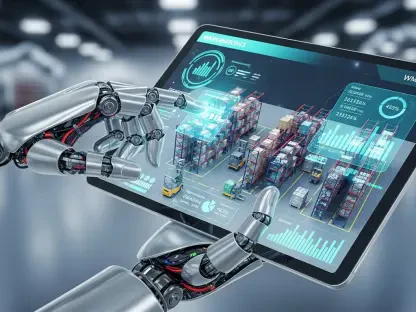Setting the Stage for a Grocery Supply Transformation
Imagine a world where fresh produce, dairy, and meat reach store shelves or doorsteps within hours of harvest, with minimal waste and maximum efficiency, a vision that is fast becoming reality through Walmart’s innovative efforts. As a titan in retail, Walmart is redefining the grocery supply chain through groundbreaking technology. The purpose of this market analysis is to dissect Walmart’s strategic integration of automation and artificial intelligence (AI) in perishable goods logistics, highlighting its impact on industry trends and competitive dynamics. With consumer demand for speed and freshness at an all-time high, understanding these shifts is critical for stakeholders across retail sectors. This examination will uncover how Walmart’s latest moves are setting benchmarks and what they signal for the broader market landscape.
Dissecting Market Trends and Technological Impacts
Automation as a Game-Changer in Perishable Logistics
Walmart’s recent unveiling of a 725,000-square-foot perishable distribution center in Wellford, South Carolina, serves as a cornerstone for analyzing current market trends in grocery supply chains. This facility, one of five planned high-tech hubs, employs over 600 staff and uses automation to process more than double the volume of traditional warehouses. Automated systems manage everything from storing incoming farmer shipments to constructing store-specific pallets, ensuring fragile items like eggs are protected. This shift toward automation addresses long-standing inefficiencies in handling perishables, reducing product loss and accelerating delivery timelines. As a result, the market is witnessing a pivot where operational speed becomes a key differentiator among retailers.
The implications of this trend extend beyond a single company’s operations. Retail giants adopting similar automated systems are driving a ripple effect, pushing smaller players to innovate or risk obsolescence. Data suggests that automated distribution centers can cut processing times by up to 40%, a statistic that underscores why investment in such technology is surging. However, high upfront costs and the need for specialized training pose barriers, particularly for mid-tier retailers. Walmart’s ability to absorb these costs due to its scale offers a competitive edge, shaping a market where technological capability increasingly dictates success.
AI’s Role in Precision and Market Competitiveness
Another pivotal trend is the integration of AI to enhance supply chain precision, a strategy Walmart employs to maintain freshness and accuracy. At facilities like Wellford, AI tracks pallets in real-time, optimizes delivery schedules, and minimizes errors compared to manual methods. This technology is crucial in the perishable sector, where even a day’s delay can mean spoiled goods and lost revenue. Market analysis reveals that AI-driven logistics are becoming a standard expectation, with projections indicating a 25% increase in adoption among major retailers by 2027. Walmart’s early and extensive implementation positions it as a leader in this space.
Competitive dynamics are also shifting as AI becomes a benchmark for efficiency. While other retailers are beginning to explore similar systems, Walmart’s vast network—serving multiple channels like in-store sales and home delivery—amplifies the technology’s impact. Challenges remain, including the risk of system failures that could disrupt operations if not mitigated by robust human oversight. Nevertheless, this trend signals a market evolution where data-driven decision-making is no longer optional but essential for maintaining consumer trust and operational resilience.
Nationwide Expansion and Market Scalability
Walmart’s strategy to scale its tech-driven approach nationwide further shapes market projections, with additional high-tech centers planned in locations like Belvidere, Illinois, and Pilesgrove, New Jersey. Complementing these are expansions of four existing distribution centers, each growing by over half a million square feet. This dual focus on new builds and upgrades reflects a nuanced understanding of regional market variations, such as differing supplier networks and consumer preferences. Industry insights suggest that this scalability will enable Walmart to maintain service consistency while capturing a larger share of the grocery market.
The broader market impact of this expansion is twofold: it intensifies competition and redefines logistical standards. Retailers without the capital to match such infrastructure investments may struggle to keep pace, potentially leading to consolidation or niche specialization. Additionally, the creation of hundreds of jobs per facility, as seen with Wellford’s 600 positions, counters narratives of tech displacing labor, instead pointing to a market trend where automation fosters economic growth. This balance of innovation and employment could influence how other companies approach technological integration in the coming years.
Forecasting the Future of Grocery Supply Chains
Looking ahead, the grocery logistics market is poised for profound transformation, with technology as the central driver. Automation and AI are expected to dominate, with fully automated distribution networks potentially becoming standard by the early 2030s. Emerging innovations, such as robotics for last-mile delivery and blockchain for supply chain transparency, are on the horizon, promising to further streamline operations. Economic pressures like rising labor costs and regulatory changes, including stricter food safety mandates, are likely to accelerate tech adoption across the sector.
Walmart’s current investments provide a blueprint for future market leaders, positioning it at the forefront of these shifts. Projections indicate that retailers who fail to invest in similar technologies may lose up to 15% of market share to tech-savvy competitors by 2028. Consumer expectations for same-day delivery and peak freshness will only intensify, creating a market environment where agility and precision are paramount. Smaller retailers might find opportunities in partnering with tech providers to access scalable solutions without prohibitive costs.
An often-overlooked aspect of this forecast is the potential for technology to redefine customer interaction with grocery retail. As supply chains become more efficient, retailers could leverage data analytics to offer personalized shopping experiences or dynamic pricing models. This evolution suggests a market where logistical advancements do more than solve backend challenges—they reshape frontend engagement, creating new competitive battlegrounds. Stakeholders must prepare for a landscape where innovation extends beyond warehouses to every touchpoint of the consumer journey.
Reflecting on Strategic Pathways Forward
Looking back, Walmart’s strategic deployment of automation and AI in its grocery supply chain marked a defining moment in retail logistics. The Wellford facility and nationwide expansion efforts demonstrated how technology could double processing capacity and enhance freshness, setting a high bar for competitors. These initiatives also revealed a market increasingly driven by consumer demand for speed and quality, with economic benefits like job creation adding another layer of impact.
For retailers aiming to navigate this evolving landscape, several actionable steps emerged from the analysis. Investing in modular automation systems could provide a cost-effective entry point for smaller players, while partnerships with technology firms might bridge expertise gaps. Training programs for staff to manage high-tech systems proved essential to avoid operational hiccups. Meanwhile, consumers could anticipate even fresher products and faster services, influencing purchasing decisions toward tech-forward brands. Ultimately, the path forward involved a proactive embrace of innovation, ensuring that both large and small market players adapted to a future where technology and grocery retail became inseparable.









